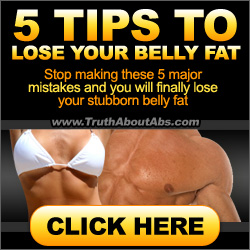How To Burn Fat While Preserving Muscle
It’s not a secret for a long time that fat burning and a relief body are no longer unrelated things. You can diet without fear for your relief muscles.
Do you, like any bodybuilder on the planet, walk into the gym every day and fight for each gram of hard-won relief muscles? You stick to a diet, your workouts are literate and consistent, and the mode of taking sports supplements is just perfect? Perhaps on the way to the ideal body you are faced with the problem of excess fat and want to get rid of it to demonstrate to the world the result of your labors. But are you ready to sacrifice several kilograms of muscles for a relief body?
Certainly not! With the right diet for burning fat, where a lot of attention is paid to microelements, you can maintain muscle relief. This walkthrough will tell you how to purchase comfort and keep volume.
Fat Burning Guide and Body Relief
Step One: Squirrels - all over the head
You have already heard a hundred times: amino acids are the basis of protein, and proteins are the building material of relief muscles. Without enough protein, you will not be able to boost your muscles. Use 1 to 1.25 grams per pound of body weight (if your weight is 90 kg), then the protein norm, respectively, 200-250 grams). Excellent sources of protein are fish, chicken, lean red meat, turkey, skimmed milk, low-fat cottage cheese, Greek yogurt, eggs, and whey protein.
Step Two: Fats Are Your Friends
You cannot imagine how essential fats are to maintain muscle mass, body relief, and weight loss. Dietary fats help burn body fat and keep the metabolism under control, regulating the level of such vital hormones like testosterone. Fat should account for about 30% of the total calorie intake. Suitable avocados, nuts, particularly almond, olive oil (as salad dressings), egg yolks, natural peanut butter and oily fish, such as salmon.
Step Three: Recycling Carbohydrates
Despite the bad reputation that carbohydrates have acquired in recent years, they are essential for the normal functioning of the body, and they also provide you with energy during intense training. The whole trick is to adjust the quantity and quality. Start with 2 grams of carbohydrates per pound of weight (with a mass of 90 kg you need 400 grams). This will be your base. Healthy sources include sweet potatoes, brown rice, Okinawa, green vegetables, oatmeal, spinach, and apples.
You can vary your plan. The cyclical distribution of carbohydrates every week allows the body to burn fat and at the same time nourish your relief muscles. Try different options. For example, every three days - low-carb (0.5-1 grams per kilogram of weight), then a day with an average amount of carbohydrates (2 grams per kilogram of gravity) and one day - high-carb (2.5-3 grams per kilogram of gravity).
- Example for weight 90 kg:
- Low carb: 100-200 g (3 days);
- Medium carbohydrate: 400 g (1 day);
- High-carb: 500-600 g (1 day).
Through trial and error, you can determine if you need more low-carb or medium-carb days per week. Do not worry about your relief body, a sufficient amount of protein and fat will be saved with great difficulty acquired muscles.
You must lose 0.5-1 kg of fat per week. Try different options - remove one or two low carb days and add a medium carbohydrate, or add 1-2 low carb days per cycle and remove a high carbohydrate day.
Top Fat Burning Questions
Is it accurate to say that overeating protein is bad for the body?
As a rule, those who have little understanding of the construction of relief muscles are most often opposed to proteins. If for an ordinary person a lot of proteins can be harmful, then when it comes to burning fat and building muscles, they are necessary. Start right: with 1 gram of protein per kilogram of weight. Someone will have enough of a smaller amount, and someone may need more. To understand what you need, experiment for a few.
Is it possible to have the same relief body as bodybuilders, but at the same time keep all your muscle mass?
Certainly not. By adhering to a pre-competitive diet, you inevitably lose muscle. The body can not burn fat in an extreme mode without damage to muscle tissue. To control muscle loss, you need an adequate amount of protein and fat. Proteins are required to maintain muscle, and essential fats provide energy and support the level of hormones, in particular, testosterone.
What does a newcomer with an average level of fat first of all need to do and who wants to get a relief body: start dieting right away, or first spend some time studying the issue of building muscle, and then trying to burn fat?
It is better to burn fat first. The reason: the less fat in the body, the more muscular you seem. The more muscle you grow, the bigger you look. Also, the relief body is always spectacular on the beach or pool.
After the relief muscles are drawn more clearly, you can begin to gain weight - by increasing the number of calories. By that the time, you will already have enough knowledge about how to become prominent, and now you can
When burning fat, is it necessary to change workouts and work with a large number of repetitions and lighter weight, or to continue the usual strength program?
To preserve muscles as much as possible during a diet, always work with the same weights that you used before. Because of this, you save muscle and burn fat. If it is not enough to load the body, then the body will compensate for this loss of tissue. You must create the conditions for muscular work. Heavy Compounded exercises like bench press, deep squats, hack squats, pull-ups, pull the dumbbells should be the basis of your training program.

